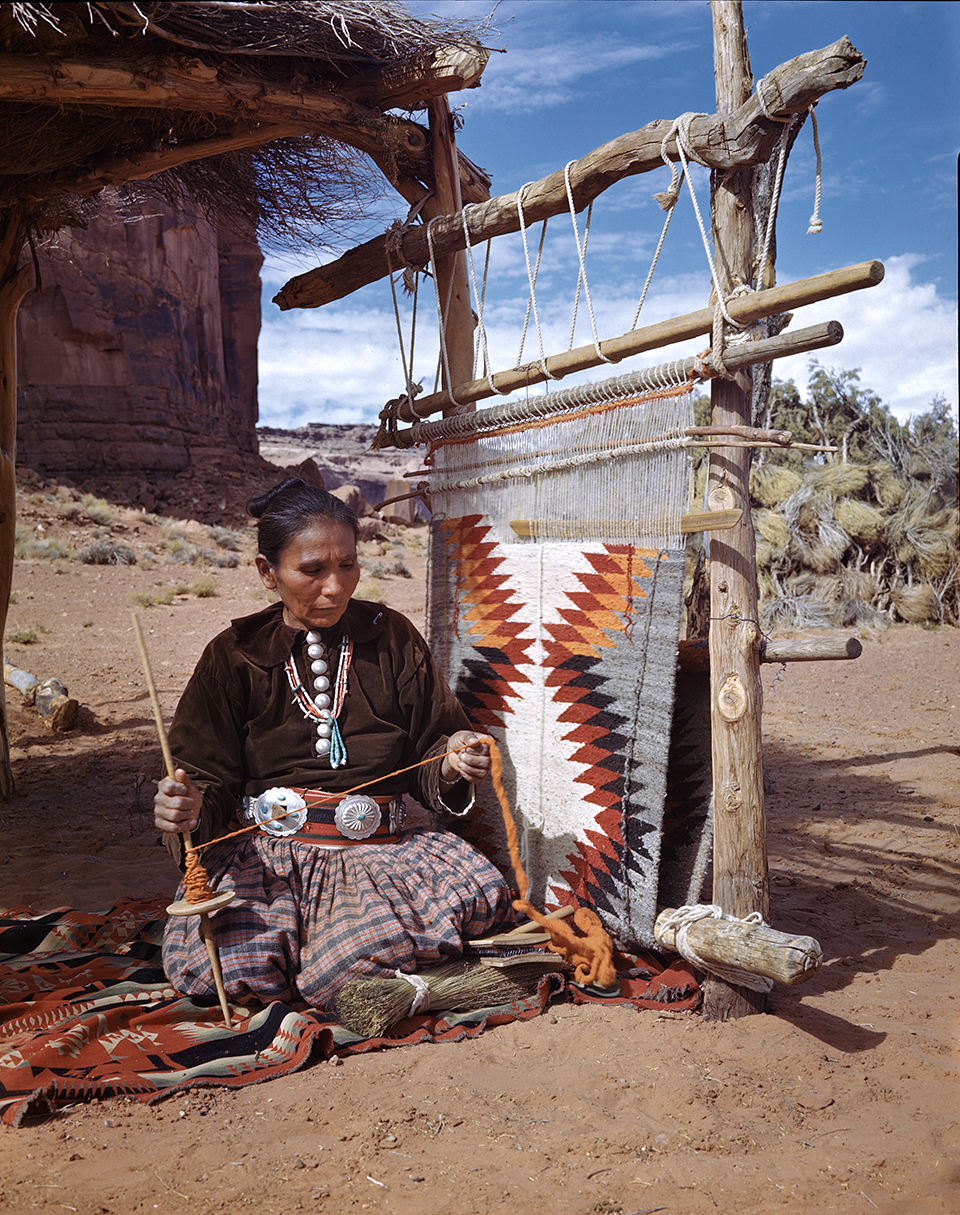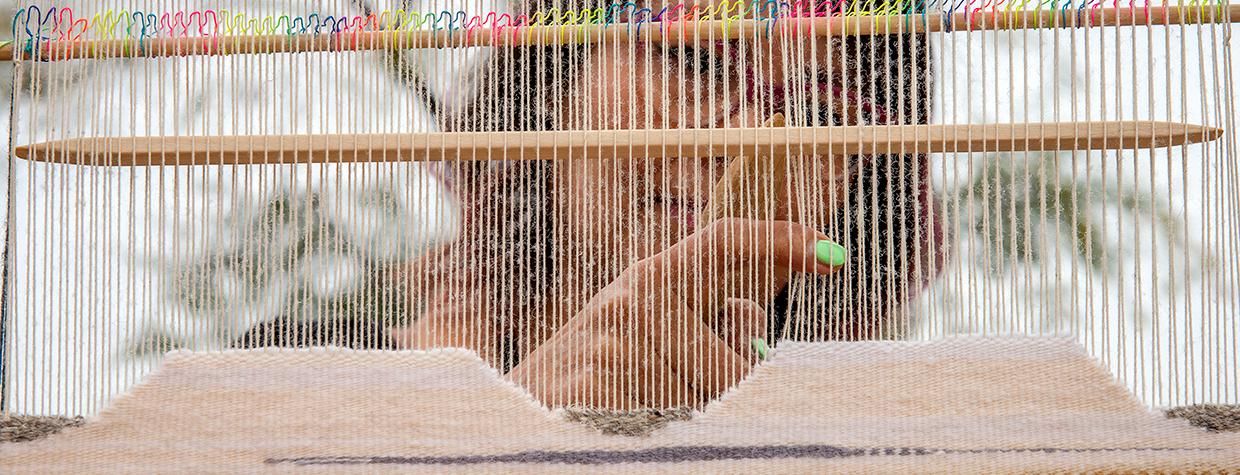When I graduated from college, my mother gave me a blanket, a blanket she had promised me for years. It was my grandmother’s, she said. The blanket was forest green, with patterned bands of orange, yellow and red.
The blanket was a Pendleton. I found the blue and gold tag sewn into its corner later that night. Pendleton blankets are prized objects in indigenous communities: They are used in ceremonies and celebrations; are given to commemorate important events; are draped over our couches and folded at the feet of our beds. But as someone who had grown up so far from home, I didn’t understand the significance of my mother’s gift. When my mother first told me about the blanket, I thought I would be receiving a piece woven by my own grandmother — a handmade, heartfelt thing. I couldn’t help but feel a sense of loss.
That night, I sat in front of my computer and read that Pendleton blankets were first popularized in the early 1900s by an English-born textile designer who mixed and matched the patterns of Native American tribes with European and Middle Eastern designs. I read about Pendleton’s modern jacquard loom, which produced detail and colors that could not be achieved using traditional weaving methods. And I read about how many Navajo weavers could not afford to keep their own, labor-intensive blankets, so they sold their work and bought Pendletons to use in their homes instead.
Volumes have been written about the history of Navajo weaving, including in past issues of Arizona Highways. In 1974, an entire edition was dedicated to Navajo and Hopi weavers. In an article about the past three centuries of Navajo weaving, archaeologist and museum curator Joe Ben Wheat claimed: “The Navajo weaver and the Navajo loom survive unchanged in the midst of civilization whose mechanical ingenuity is unparalleled in history. The Navajo accepts television, instant coffee, automobiles, and Italian silk suits — but — his loom will not change in the least detail.” Joe Ben Wheat makes me laugh a little.
In our stories, the Holy People taught Spider Man how to make the first loom. The top and bottom beams were made of sky and earth; the tension rods that held the warp were made of sun rays. Traditionally, looms were made out of the wood that was available, usually juniper or cedar, and the tension rods were tied to the frame with rope. Today, weavers and the artisans who make their tools have made many adaptations and improvements, including using steel rods and turnbuckles to provide more even and controllable tension.
The Navajo weaver is not unchanged; indigenous art is not static.
I have seen and touched some of the oldest surviving chief’s blankets, with bold stripes of white and brown wool from the Navajo-Churro, a sheep introduced by the Spanish conquistadores. The variegation in the brown wool resembles black-streaked wood.
After the Long Walk, after Kit Carson and his men slaughtered entire herds of Navajo-Churros and scorched the earth, Navajo weavers traded for any fibers they could, such as soldiers’ red flannel long johns, to unravel and respin. Some curators and textile experts call this the Transitional Period: as we transitioned from life in our homeland to life in Bosque Redondo, New Mexico, where the U.S. government envisioned we would live and assimilate, and where we lived in poverty and despair; and as we transitioned, five years later, from life in Bosque Redondo to life on the newly established Navajo Reservation, a small fraction of the land we once called home. Navajo weavers transitioned from weaving blankets and biils, traditional dresses, to weaving rugs for trade.
Although many weavers inherited family designs and patterns, they also adapted their work to meet the regional demands of the market. Two Grey Hills weavers preferred the natural colors of wool, blending shades of white and cream, brown and beige, black and gray. Wide Ruins weavers preferred vegetal dyes, using local plants such as Navajo tea and rabbitbrush to create yellows and golds. Ganado weavers used bold blacks and reds. Burntwater weavers married Two Grey Hills geometrics and Wide Ruins earth tones to create a style of their own. Navajo weavers, like all indigenous artists, are constantly experimenting and innovating with color, design and materials.
Last fall, I was accepted to a weeklong weaving class at Phoenix’s Heard Museum, a collector and supporter of Native American artists. The class was taught by Barbara Teller Ornelas and Lynda Teller Pete, sisters and weavers of Two Grey Hills rugs.

circa 1960. | Northern Arizona University Cline Library
There were 20 students in the class — all of us Navajo women. Our ages spanned decades. Some of us remembered our mothers and aunties and grandmothers weaving when we were children. Some of us weaved as children. Some of us found out our families used to weave only after we had begun ourselves. Some of us had never touched a loom, and some of us had been weaving for years. I shared a table with a woman named Sue, a student and grandmother who started weaving a few years before me through the Navajo Cultural Arts Program.
Barbara taught us how to use a Navajo spindle to respin commercial warp. Lynda taught us how to dye wool using natural materials such as Navajo tea, onion skins and logwood.
At the end of the second day, they gave us a sheet of graph paper to design our 16-by-12-inch rug. Designing a rug should be one of the most enjoyable parts of weaving, but I often find it one of the most overwhelming. I was not born into a style or a color palette; I have never even seen one of my grandmother’s rugs.
I spent that evening Googling images of “Navajo rug designs.” After hours of scrolling, I sketched two simple sets of sharp lines, like teeth closing around the waist of my rug.
I envisioned the lines would be black and gray and red against a field of snowy white, but the next morning, after we selected our skeins of wool, Lynda replaced my white with brown. The white wool had been bleached and was too inflexible, and if I tried to use it as my background color, it would be too difficult to keep the edges of my rug straight.
“You’re already learning something!” Sue said, happily, as I pulled the rows I had already weaved out of my rug.
I returned the skeins I had chosen and picked a new set of colors to match Lynda’s reddish brown: a dark brown, a light gray and a red. As I started weaving the colors into my design, they reminded me of a fox.
“It’s your foxy rug,” Sue joked.
Velma Craig, a weaver and Andrew W. Mellon Fellow at the Heard Museum, brought her own loom into the room to weave with us. And she showed us a rug she had just finished: a reinterpretation of the Tree of Life design. Instead of a cornstalk surrounded by birds, she had weaved a tall kelp plant surrounded by fish, angelfish and blue tangs and zebrafish, inspired by the characters of Finding Nemo. “I should have made a little ink cloud,” she joked, pointing at a purple octopus.
On the second day of weaving, my rug started to buckle. Many of my previous rugs had been too tight, and I overcompensated in the opposite direction. I spent the next three hours hunched in front of my loom, pulling each row tighter with the head of a tapestry needle.
When I finally straightened with a groan and glanced at Sue, whose rug kept climbing higher and higher, she caught my eye and laughed: “You’re learning!”
No one — not even Sue — finished her rug by the end of the class. But on the last day, Lynda asked each of us to talk about our rugs as if we were trying to sell them. She told us not to focus on the flaws or mistakes. She warned us there would always be critics and those who questioned our methods or our designs. But she encouraged us to talk about our families and where we were from, and to focus on what we had learned and how our art had grown.
We talked about our mothers and our grandmothers, our aunties, our sisters and our cousins and our daughters. We talked about all the women who came before us, and all the women who would come after us, and all the love and beauty we hoped to share.

